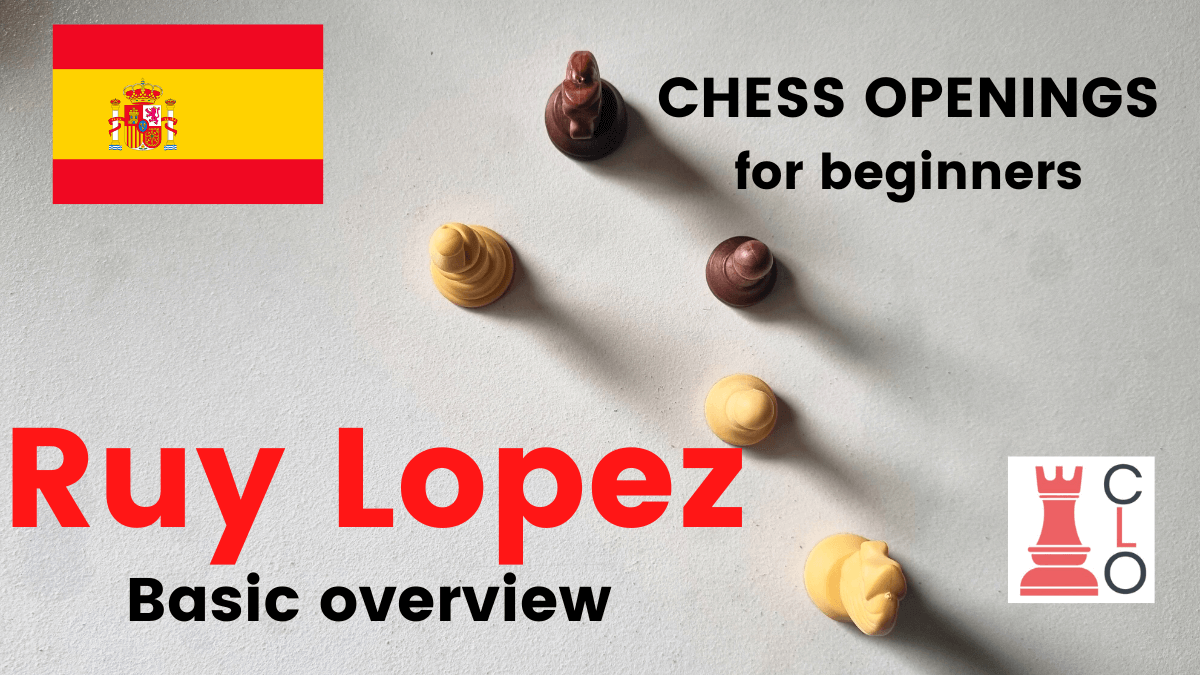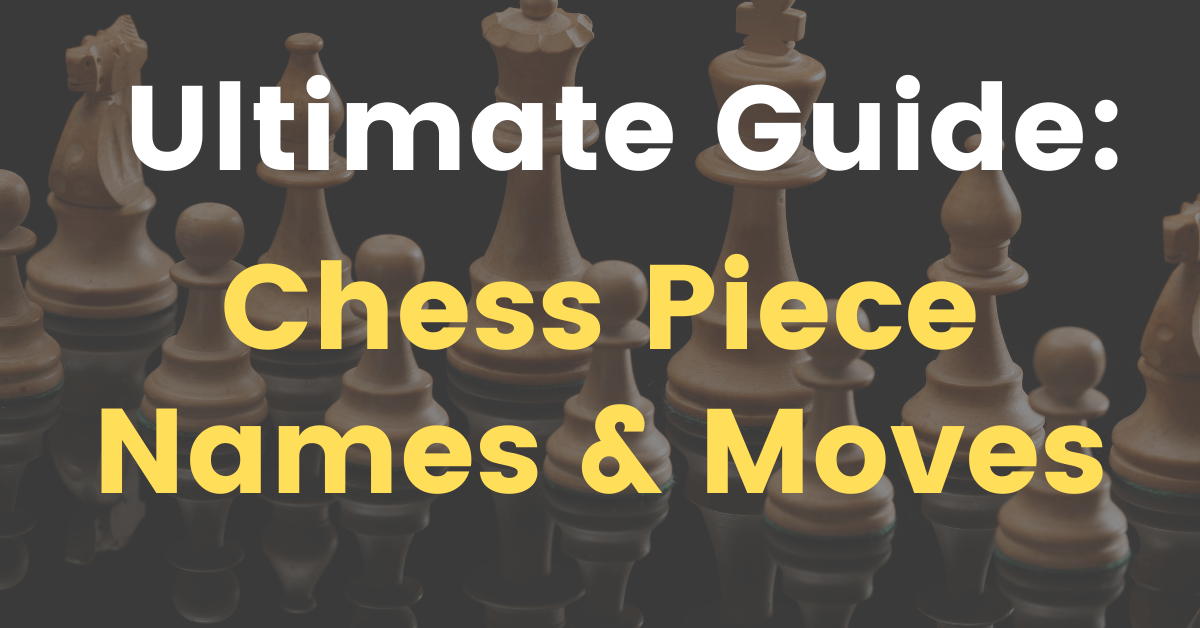Join our exclusive newsletter for opening guides, tips, and inspiration. Our community of 5,131+ chess enthusiasts is waiting for you.
Don't wait – enter your email below and join now!
Philidor Defense (C41) – 1. e4 e5 2. Nf3 d6
The Philidor Defense (C41) was named after the famous 18th-century player Francois-Andre Danican Philidor who described that “the pawns are the soul of chess”.
Philidor advocated 2. …d6 instead of the more common 2. …Nc6. His original idea was to challenge White’s centre with the pawn thrust: f7 – f5 – which is now referred to as the Philidor Countergambit Variation.
You can use the interactive diagram below to go through the initial moves of the Philidor Defense. It is powered by Lichess.org. The arrows and circles indicate the important points to consider for each move.
You may also like:
- How to Learn the Giuoco Piano Opening in 2021?
- How do you Play Chess and Win Easily? (Solved)
- The Best Chess Book to Learn Chess Tactics (you will be surprised!)
Some basic ideas in the Philidor Defense:
- Black avoids the Spanish Game (Ruy Lopez) where Black plays 2. …Nc6 and White responds with 3. Bb5.
- This is because Black has nothing on the c6 square at the moment in the Philidor Defense.
- Also, Black can play c6 defending the check from White’s bishop moving to b5.
Some disadvantages:
- The c6 pawn blocks Black’s dark-square bishop from developing.
- Black’s pawn formation is quite passive.
Main continuation for White:
The best move for White is to play 3. d4 which directly attacks Black’s pawn centre.
This is because Black doesn’t have any Knight on c6 to defend if White plays dxe5 on the next move. (In the Italian Game or the Spanish Game, Black has a Knight on c6 to defend when White plays d4).
Also, beginner players often forget that the d6 pawn is pinned to Black’s queen after White plays dxe5 on move 3. Often this results in the following manoeuvre, which is winning for White:
Even if the Black player remembers the above diagram, they often forget the same rule applies after a set of different moves. Like the following, which occurred in one of my games on Lichess.org:
However, if Black knows what he is doing the Philidor Defense is a solid albeit passive opening. After Black castles and enters the middle game then all is OK for them, and you can start playing some chess.
If you meet someone who knows the theory as Black then you need to know at least some theory to know what to do as White.
So, let’s look at the three main variations for the Philidor Defense then:
Three Main Variations for the Philidor Defense:
There are three main variations which are played in the Philidor Defense after 3.d4:
The Exchange Variation – 3. …exd4
The Exchange Variation begins with Black taking on d4 with the e5 pawn. This is probably the move that most beginners play in order to resolve the tension in the centre and to get out of the variations above with the Queen trade.
However, as people’s ratings go up it is more likely they will play the other two main variations in the Philidor Defense.
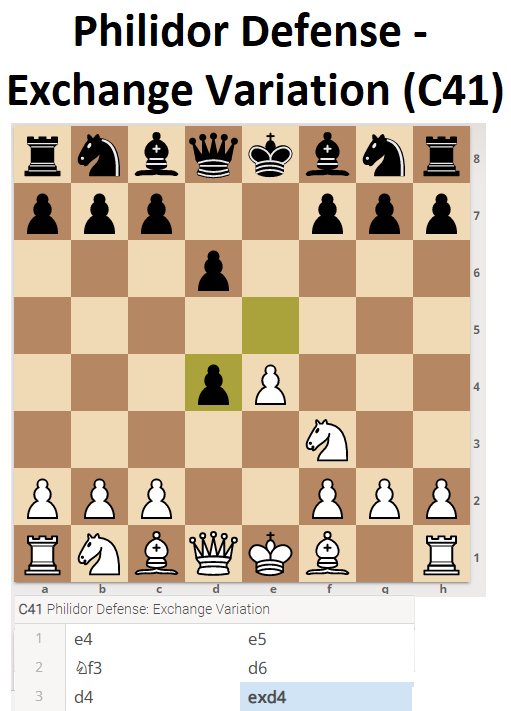
White can then take the d4 pawn with the Knight or the Queen.
If White takes the d4 pawn with the Queen, White’s Queen will be subject to the tempo-gaining move 4. …Nc6. But if White takes the d4 pawn with Knight, then Black often plays 4. …Nf6 attacking White’s e4 pawn. Thus, White defends with 5. Nc3.
The above moves are in the diagram below:
Let’s move on to the next variation.
Nimzowitsch Variation – 3. …Nf6
The Nimzowitsch Variation of the Philidor Defense begins with Black playing Knight to f6, refusing to resolve the tension in the centre.
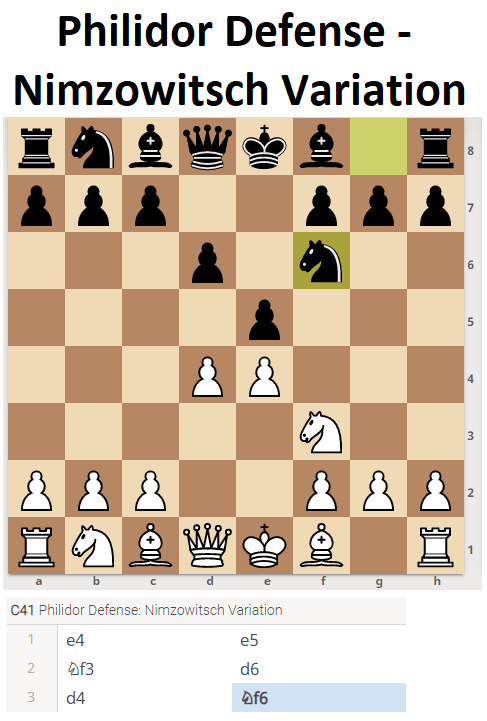
The Nimozowitsch variation is quite ‘boring’ but a solid opening for Black, where White seems to be able to develop all their pieces to active squares. But, there is little to do in the position for White in the beginning. Black gets their pieces out and castles. White also follows suit, gets their pieces out and castles.
In other words, the Nimzowitsch structure is difficult for White to attack at the start of the game. Here are the initial moves in the Nimzowitsch Variation:
Hanham Variation – 3. …Nd7
The Hanham Variation of the Philidor Defense begins with Black playing Nd7 on move three. This variation is the one which players of high ratings and Grandmasters most often play.
This is because the Hanham Variation complicates matters, but it also gives White some dangerous ideas (if White know the theory – details below).
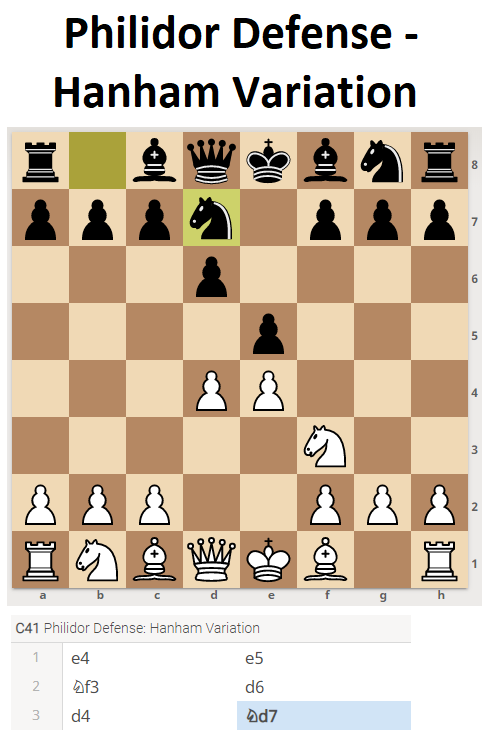
Black plays Knight to d7 on move 3.
That way the Knight on d7 blocks the attack from White’s Queen to Black’s Queen if everything gets exchange off in the centre. Also, the Knight on d7 defends the e5 pawn one more time.
That means there are no more tricks with Queen trades and losing castling rights like above.
For example:
After 3. …Nd7 the Hanham Variation continues with White playing bishop to c4, and Black playing pawn to c6. White castles, Black plays Bishop to e7 getting ready to castle. Finally White plays dxe5 and Black plays dxe5.
If we look at the computer evaluation, it says that White is up +1.5.
Why? Well, take a look at the final position of the interactive diagram below and see what you would play:
Giving you some time to check your own ideas…
And….
Some…
More…
Time…
The Answer:
The idea is for White to play Knight to g5, seemingly giving up a Knight. Take a look at the interactive diagram below:
After White plays Knight to g5, Black takes it with the Bishop. But because White’s Knight moved, White can now play Queen to h5.
This threatens checkmate and attacks the Bishop on g5.
Black defends checkmate with Queen to e7.
So, White takes the Bishop with the Queen. (White taking the Black bishop with their own Bishop would be a mistake because Black can play Knight to f6 attacking White’s Queen).
Black then takes White’s Queen with their own Queen, and finally White takes Black’s queen with their Bishop.
That’s the complicated plan White must know in advance.
Let’s now move onto the two sidelines:
Two Sidelines for the Philidor Defense:
Philidor Counter-Gambit – 3. …f5
A more aggressive approach for black after 3. d4 is 3. …f5 – which was actually Philidor’s original recommendation and intention for this opening. This is often considered dubious by some, but okay by others.
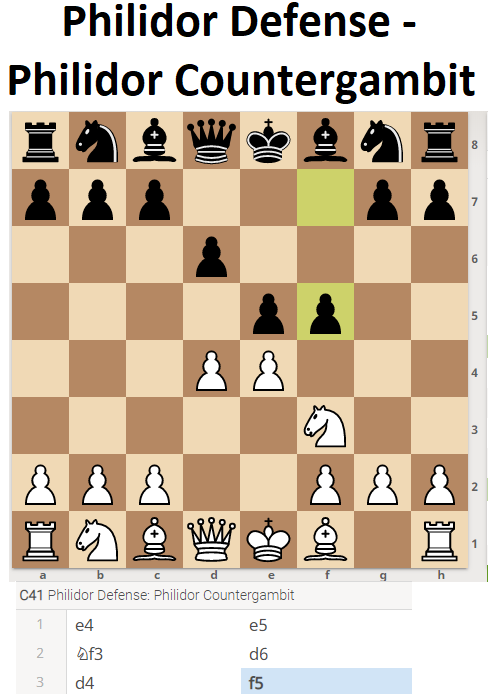
After 3. … f5, white has a few moves they can play:
4. Nc3 (the Zukertort Variation) where White obtains a clear advantage.
4. Bc4 which also leads to a clear advantage for White.
4. dxe5 where Black most often responds with 4. …fxe4 5. Ng5 d5. This leads to an unclear position.
Pinning Variation of the Philidor Defense – 3. Bg4?!
This is a poor sideline for Black.
This is because White can play 4. dxe5 Bxf3.
After White’s response, Black cannot recapture because White can win a pawn by playing 4. … dxe5 5.Qxd8+ Kxd8 6. Nxe5.
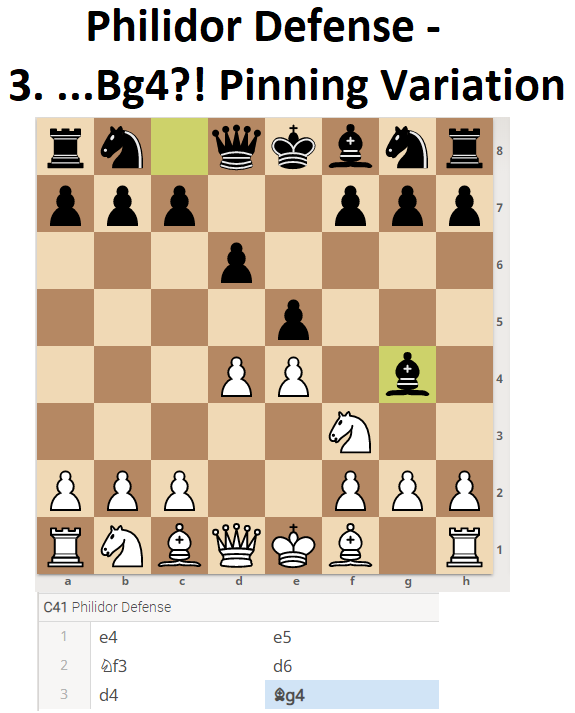
So there we have it!
If you have any questions please let me know in the comments below!
What next for Chess and ChessLoversOnly?
Keep coming back to Chess Lovers Only for more chess-related news and chess opening studies! We can tell you how to destroy your opponent in the Open Game as well as how to win using the Italian Game.
What should we write about next?
Let us know in the comment box below!
Or Contact Me here.
Cheers,
A.J. McMahon
.
.
.
Let’s Connect!
– Youtube: ChessLoversOnly
– Instagram: Chess.Lovers.Only
– Pinterest: ChessLoversOnly
– Facebook: ChessLoversOnly
– Twitter: @ChessLoversOnly








